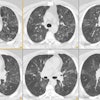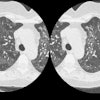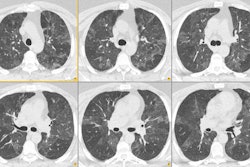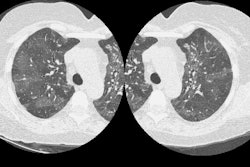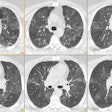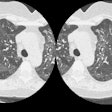Radiology 1996 Sep;200(3):681-686
Solitary pulmonary nodules: MR evaluation of enhancement patterns with contrast-enhanced dynamic snapshot gradient-echo imaging.
Guckel C, Schnabel K, Deimling M, Steinbrich W
Department of Radiology, University Hospital of Basle, Switzerland.
PURPOSE: To evaluate the enhancement patterns of solitary pulmonary nodules (SPNs) with dynamic contrast-material-enhanced magnetic resonance (MR) imaging to differentiate between benign and malignant SPNs.
MATERIALS AND METHODS: Twenty-eight patients with SPNs 30 mm or smaller in diameter were examined with pre- and postcontrast, electrocardiographically gated, T1-weighted spin-echo (SE) sequences and a snapshot gradient-echo (GRE) sequence after bolus injection of a paramagnetic contrast agent. For all SPNs (20 malignant, eight benign), the percentage increase in signal intensity (%SI) on the postcontrast T1-weighted SE images and the enhancement curves (%SI/sec) for the snapshot GRE measurements were established from regions of interest. RESULTS: Malignant nodules showed a higher increase of signal intensity during the first transit of the bolus of contrast material on the dynamic snapshot GRE images (malignant: median, 18.1 %SI/sec; range, 6.7-95.2 %SI/sec; benign: median, 2.3 %SI/sec; range, 0.1-8.1 %SI/sec) (P < .0001). Static T1-weighted SE measurements did not allow differentiation between malignant (median, 53.4 %SI; range 12.5-110.0 %SI) and benign (median, 33 %SI; range, 0.8-85.5 %SI) (P > .2) nodules on the basis of the degree of contrast enhancement. CONCLUSION: Dynamic contrast-enhanced MR measurements of tumor enhancement can provide additional information about the nature of SPNs.
PMID: 8756914, MUID: 96347834
